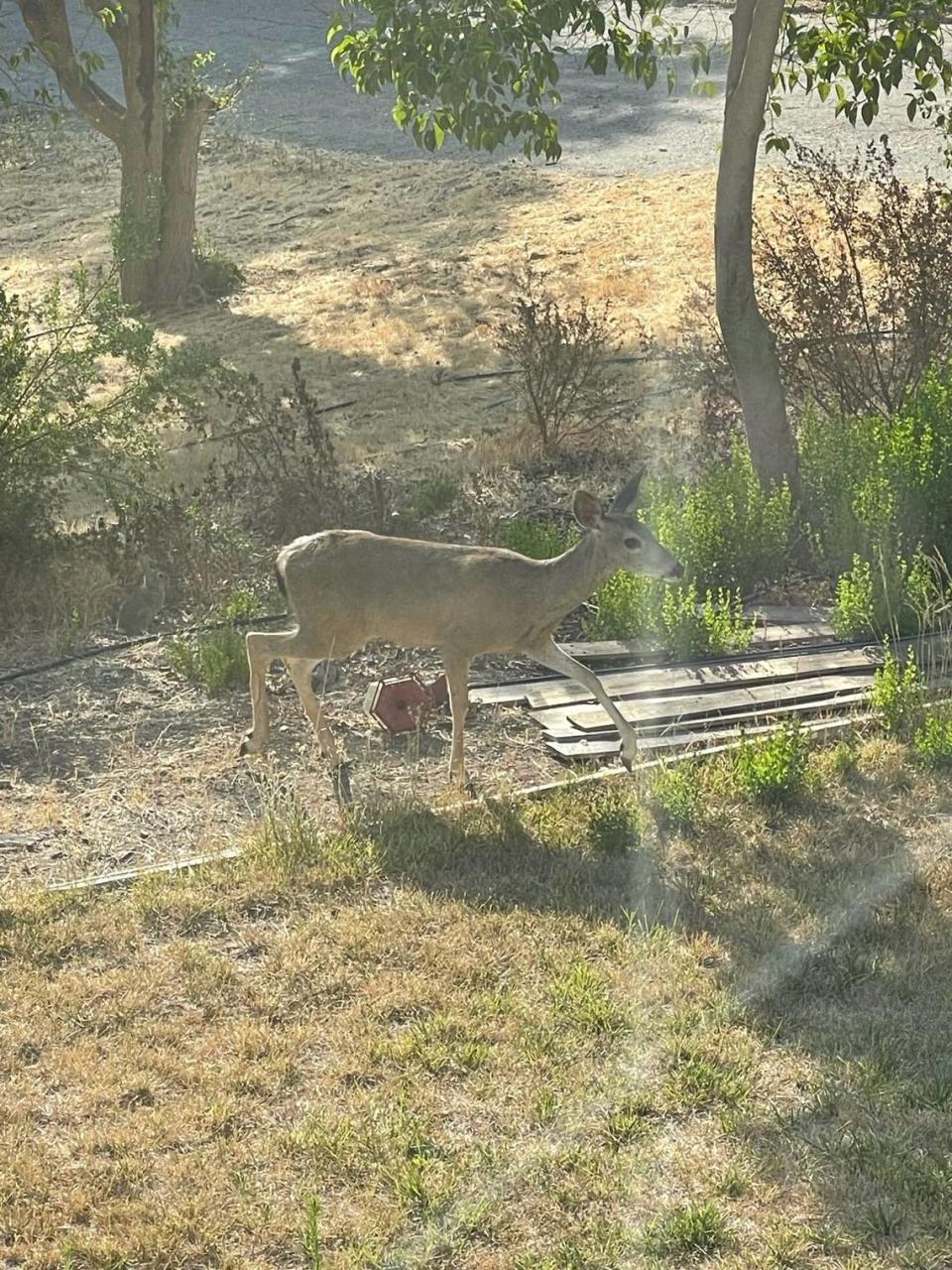4 deer mysteriously found dead in a California yard after storm. What killed them?
It was a dark and stormy night Sunday when a herd of four deer congregated around the orchard fence at Elizabeth Lobo’s Paso Robles home.
By Monday morning, all of them were dead.
“After my husband took the kids to school, I looked out our back window and saw the deer down there. It had been an overcast and drizzly morning and I thought it strange that they would be sleeping like that,” said Lobo, who teaches anatomy and physiology at Cuesta College in San Luis Obispo.
After going upstairs for a while, she came back down and noticed the four deer still lying on the ground.
That’s when Lobo walked outside and discovered all four were dead. The buck was missing an antler and had foamy vomit coming out his mouth, Lobo said, which alarmed and led her to suspect poison, so she called 911.
“The thought of it being poisoning is so upsetting,” Lobo said. “It makes you question your neighbors.”
What killed four deer in this Paso Robles backyard?
A police officer came out and looked around, then contacted Mathew Gil, lieutenant for the California Department of Fish and Wildlife (CDFW).
“Typically, one deer wouldn’t be a point of concern, but since it was several, we wanted to make sure it was investigated properly,” Gil said.
Gil said that he wanted to make sure the herd — three does and a buck — weren’t indeed poisoned or shot illegally. Once he ruled out the criminal element, he called in Brandon Swanson, San Luis Obispo biologist for CDFW.
The deer had burn marks on their bodies, the buck was completely missing an antler, which also had burn marks, and all four deer were lying next to Lobo’s metal fence, she said.
Swanson came to a quick conclusion.

“Lightning or some kind of electrical discharged seemed to be the cause of death there,” Swanson said. “They were all touching the metal fence when I found them. I mean, anything else wouldn’t drop four deer dead.”
“I thought, ‘Wow, that’s amazing, but I don’t see any evidence that lightning struck,’” Lobo said.
The sudden deer death was the talk of the neighborhood, and Lobo’s neighbor soon found footage from their Ring camera that showed a sudden flash of light at 3:47 a.m., followed by loud animal cries, she said.
Lightning strikes at a high voltage, which means the death shouldn’t have been too painful, Swanson said, although the force of the strike appeared strong enough to blow off the buck’s antler.
“That was definitely one of the weirder things I have ever seen,” he said.
While unusual, scientists have heard about deer or other animals being killed by lightning, Gil and Swanson said. In fact, Swanson said more than 300 reindeer were killed in Norway after a lightning strike in 2016, an observation detailed in a New York Times article.
A science lesson and new purpose for the four deer
Lobo said she was afraid that the deer carcasses might upset her three children and had hoped they would be removed before the kids came home from school. Instead, the children were fascinated and watched with curiosity as Swanson assessed the deer corpses.
“I have a third-grader, fifth-grader and an eighth-grader,” Lobo said. “They asked the biologist so many questions. My oldest wants to be a vet and was very intrigued.”
Swanson said he told the kids about the deer’s age and tissue samples he was taking.
“They had a bunch of questions and I was happy to answer them to the best of my ability,” Swanson said.
“We also learned about rigor mortis,” Lobo said.
Eventually, Swanson packed the four carcasses into his car and whisked them back to a storage facility. The deer will stay frozen at the facility until they can undergo a necropsy, which is essentially an animal autopsy, Swanson said.
Gil said that, if a necropsy determines that it was, in fact, a lighting strike that killed the deer, the carcasses will be reused for mountain lion traps or donated to a Cal Poly mammology class for educational purposes.
“Four deer is a large resource to lose. It’s sad, but it’s part of nature,” Gil said.

 Yahoo Movies
Yahoo Movies 
